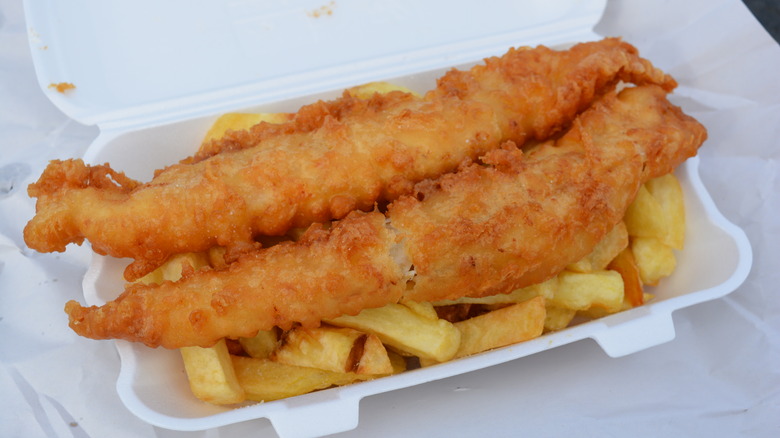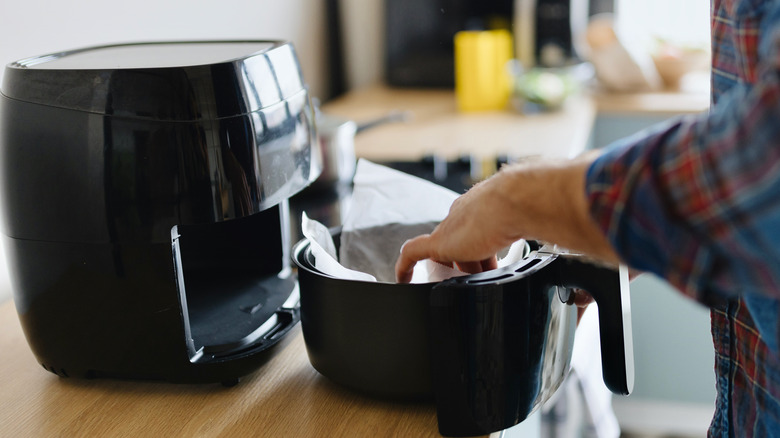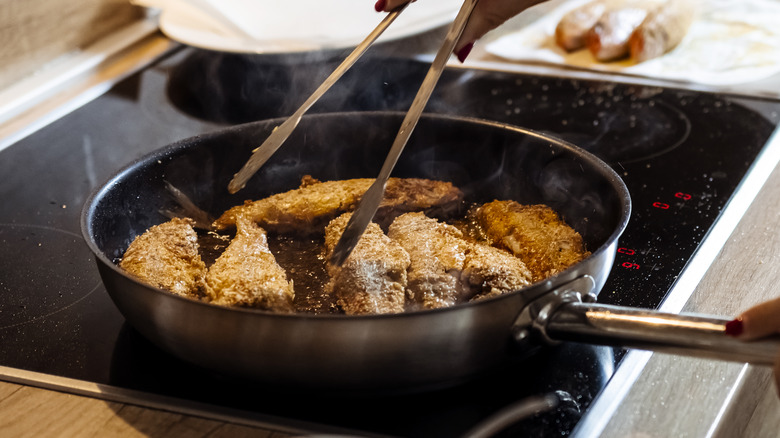The Best Way To Reheat Crispy Fried Fish
Fried foods can be tough to reheat. And while the goal is to recapture that original texture, most of us have experienced the disappointment of microwaving a fish patty that was just too rubbery to bother with. Because of the way microwaves work — heating the food rather than the air around it — when it comes to fried fish, you're much more susceptible to uneven heating. This can be true in general, but add a bread coating to the mix, and you're almost sure to end up with cold spots in your filet and hard or burned bits in your breading.
Despite the microwave's convenient design, which can help cut corners in the right setting, there is no way to ensure an even reheat with certain foods. Luckily, there are better options; from convection ovens and air fryers to stovetop re-frying, a variety of reheating methods provide their own set of pros and cons. Our favorite is pan frying, but the oven or air fryer can work well too.
Air Fryers and Ovens
While air fryers, convection ovens, and standard ovens all operate in similar ways, the former two differ from a conventional oven because the air is being circulated during the reheating process. Because of the moving air, there's less need to flip or rotate ingredients while using an air fryer/convection oven. Both of those do a great job with fried fish in particular because of the high temperatures reached inside, but that heat can be the opposite of beneficial if you don't take precautions.
One downfall to these methods is the potential of drying out your leftovers if left cooking too long. To prevent this from happening, you will want to reheat your fish inside of an oven-safe container with a ventilated lid so that moisture has a better chance at being retained inside the fish without causing it to become soggy.
Regarding the air fryer/convection oven, tin foil is technically safe to use but only under certain circumstances and you're better off lining the bottom with parchment paper instead. Once you've prepared the right dish, set oven temperature no lower than 325 degrees Fahrenheit and check your fried fish to ensure that it has cooked through.
Pan Frying
We find shallow frying to be the optimal way to reheat fish, which, yes, requires a bit more effort, but is worthwhile. While you're heating a thin layer of high-smoke point oil to about 350 degrees Fahrenheit, check to see if your breading is at all soggy with moisture and soak it up to avoid oil pops. After that, allow your leftover fish to cook for about 1 to 2 minutes on each side. Pay close attention to how dark your fish is getting and watch that your breading doesn't go from crisp to tough as it heats up. Once both sides are golden enough, place your fried fish on a paper towel to remove excess oil.
Convenience is important these days, and we love a method that works quickly and efficiently. Pan frying might take a little extra effort, but you can't argue with the speedy results. Using a microwave or any form of oven is less hands-on, but takes longer and leaves more opportunity for cold spots. Reheating fried fish is an art that should be handled with care if you want to enjoy that leftover meal and pan frying is the way to go.


